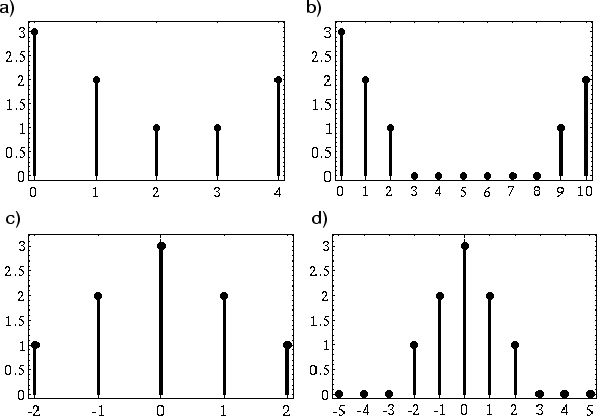NOTE: THIS DOCUMENT IS OBSOLETE, PLEASE CHECK THE NEW VERSION: "Mathematics of the Discrete Fourier Transform (DFT), with Audio Applications --- Second Edition", by Julius O. Smith III, W3K Publishing, 2007, ISBN 978-0-9745607-4-8. - Copyright © 2017-09-28 by Julius O. Smith III - Center for Computer Research in Music and Acoustics (CCRMA), Stanford University
<< Previous page TOC INDEX Next page >>
Zero Padding
Definition: Zero padding consists of appending zeros to a signal. It maps a lengthsignal to a length
signal, but
need not be an integer multiple of
:
For example,
The above definition is natural whenrepresents a signal starting at time
and extending for
samples. If, on the other hand, we are zero-padding a spectrum, or we have a time-domain signal which has nonzero samples for negative time indices, then the zero padding is normally inserted between samples
and
for
odd (note that
), and similarly for even
. I.e., for spectra, zero padding is inserted at the point
(
). Figure 8.5 illustrates this second form of zero padding. It is also used in conjunction with zero-phase FFT windows(discussed a bit further below).
Figure 8.5:Illustration of frequency-domain zero padding: a) Original spectrum plotted over the domain
where
(i.e., as the spectral array would normally exist in a computer array). b)
. c) The same signal
plotted over the domain
which is more natural for interpreting negative frequencies. d)
.
Using Fourier theorems, we will be able to show that zero padding in the time domain gives bandlimited interpolation in the frequency domain. Similarly, zero padding in the frequency domain gives bandlimited interpolation in the time domain. This is how ideal sampling rate conversion is accomplished.
It is important to note that bandlimited interpolation is idealinterpolation in digital signal processing.
